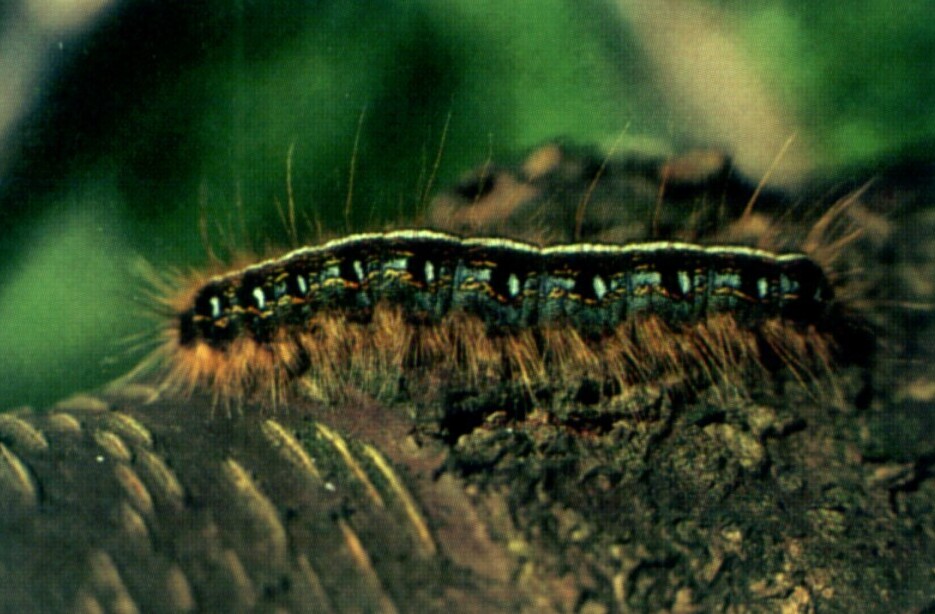What’s wrong with my tree?

Many forests pests can be present on a property and often do not cause serious harm to the overall forest health in the long term. However, some invasive forest pests and diseases can cause serious damage to single trees or forest populations. Below are a few common invasive pests to look out for on your property.
It is important to know the species composition and risk factors for your property and it is recommended to monitor annually for the presence of the following invasive insect pests even if they are not known to be present. Below are a few common forest and tree pest that can be a concern to landowners. For a full list, please check your state natural resource agency website found in the resources page.
Beech Bark Disease (BBD) (Nectria coccinea var. faginata)
Beech Bark Disease (BBD) results from attack by the beech scale insect (Cryptococcus fagisuga) followed by the fungi (Nectria coccinea var. faginata). BBD leads to the decline of beech trees and stimulates the tendency of beech trees to root sprout, potentially disrupting forest regeneration by creating beech thickets in which other tree species cannot compete for establishment. Many beech trees in the Northeast have BBD and there is little you can do to protect your forest from exposure. However, knowing that this is present in your forest before, any active management or harvest can help control the root sprouts which often hinder regeneration of other tree species. Management recommendations often include retaining unaffected or resistant trees while controlling the ability of infected trees to root sprout.
Emerald Ash Borer (Agrillus planipennis)
Emerald ash borer (EAB) is a very serious forest pest and is spreading rapidly throughout the Northeast. EAB is an invasive beetle native to Asia that has been spreading rapidly and causes nearly >95% mortality in all species of ash trees, generally within 3-5 years of infestation. It is important to continue to monitor its presence and make decisions on management accordingly. Signs of emerald ash borer include declining health of ash trees, with specific signs including woodpecker damage at the tops of the trunk, adventitious sprouting from the base of the tree, canopy die-back, and small ‘D’ shaped exit holes in the trunk. If you suspect that you have EAB on your property it is NOT recommended to cut all of the ash trees on your property, rather there are specific state guidelines to help you manage your ash population in the event of infestation. We can help identify signs of this insect and discuss your options for management if this pest is found on your property.
Hemlock Woolly Adelgid (Adelges tsugae)
Hemlock Woolly Adelgid (HWA) form small woolly masses at the base of needles. They insert their long mouthparts and begin feeding on the tree's stored starches. HWA remain in the same spot for the rest of their lives, continually feeding and developing into adults. Their feeding severely damages the canopy of the host tree by disrupting the flow of nutrients to its twigs and needles. Tree health declines, and mortality usually occurs within 4 to 10 years. HWA is often considered a more central forest species not occurring in Northern climates; however, trends show that is has been moving North and should be monitored. Signs of HWA include small white cotton-like accumulations at the base of needles.
Fall Web Worm (Hyphantria cunea)
Fall webworm is a moth that created a characteristic webbed nest on the limbs of many hardwood trees when in the summer and fall months. While it is considered a forest pest and can lead to some defoliation and unsightly webs, if a tree is healthy and is growing vigorously, there is often no lasting damage unless there is repeated infestations year after year. While it is the larvae that create tree webs, the adult moth is mainly white with some black or brown spots in the forewings. The caterpillars can be variable in color ranging from pale yellow to grey, and often having two white stripes along the length of its body.
Eastern Tent Caterpillar (Malacosoma americanum)
The eastern tent caterpillar is often a concern for landowners. Populations can fluctuate from year to year, with noticeable outbreaks occurring every several years leading to defoliation of many fruit trees and some hardwood species like maple in the late spring and early summer. This caterpillar can cause problems with tree health if there is repeated defoliation for consecutive years, but in otherwise healthy trees, serious problems are not likely to develop.